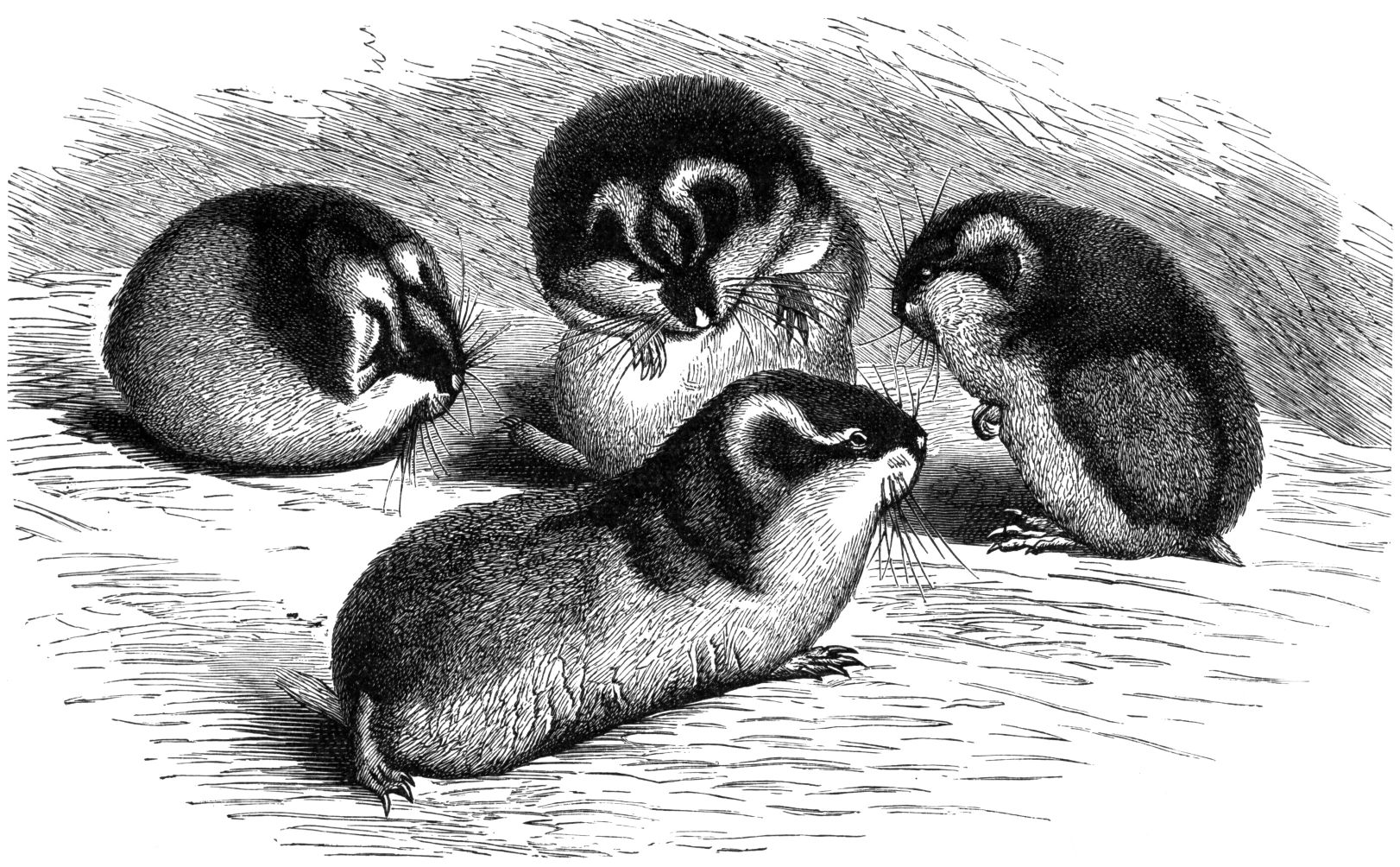When a microbe was found munching on a plastic bottle in a rubbish dump, it promised a recycling revolution. Now scientists are attempting to turbocharge those powers in a bid to solve our waste crisis. But will it work?
Who knows what its consequences are? How about a simpler approach, like reducing plastic use maybe instead of some pie in the sky project?
We do probably want both. Even if we end plastic production completely tomorrow, we need to work out a way to clean up all the plastic we’ve already dumped all over the world
yeah but one of them we can do right now with minimum consequences and the other is provocative with no clear path to viability and no real understanding of the consequences.
We should prob just leave any existing plastic as plastic wherever it lay instead of turning it into CO2. Burying it is a better idea than emitting it.
I agree. We want both. Its like water consumption needs which keep increasing. We want to reduce demand and increase leakage reduction rather than take more water out of the environment. We’re making a mess of this planet because our lives are based on the assumption of eternal growth.
Who knows what its consequences are?
That’s why they’re doing research genius
Both is good, but even stopping all plastic today and picking up every piece of trash we can grab with our hands won’t clean up the microplastics that are already in the environment.
With how heavily integrated plastics are into EVERYTHING in our society, I think that’s not necessarily the “simpler” approach, even if I agree that it’s vital.
This is why research is being done. The “pie in the sky project” you’re objecting to is intended to answer the very question you’re asking.
What kind of question even is that? Reducing plastic enough and getting rid of the amount that’s already in the environment without new technological solutions is nothing but fantasy at this moment.
Mfw the bacteria evolve to turn plastic into methane 🔥 💀 🔥
Mfw cows are producing 300 times as much methane as there is plastic being produced in total: 😐
Check the actual numbers before getting so concerned.
YFW you don’t even check the numbers you are chastising me for not checking and are wildly incorrect 🤡:
https://www.statista.com/topics/5401/global-plastic-waste/#topicOverview
400 million metric tons of plastic per year produced
https://www.statista.com/statistics/1261318/cattle-methane-emissions-worldwide/
75 million metric tons of methan from cow farts per year
deleted by creator
As if the micro plastics crisis hasn’t already made the “pie in the sky” solution a necessity at this point
deleted by creator
Paper bags are worse, except maybe for microplastics. But they take more resources to create, and aren’t as recyclable as good plastic bags. You can use a canvas bag, but that takes even more resources to create. So you have to use the same canvas bag for years
I agree. However, the most important reason to reduce plastics is because of the health effects of microplastics. Waste is probably the second priority in my mind.
I would say because the vast majority of plastics are made from fossil fuels and contribute to global warming, microplastics are bad too though
The most ideal situation is if we archieve 100% recycling.
In reality no thing can disappear, both matter and energy just change form. We only need to look at nature for proof that 100% reusing matter and energy is feasible. Even our “waste” wasn’t wasted.
These microbes are yet another key in the puzzle to obtain the next breakthrough. Once we master industrial chains with full conservation of matter and energy the cost of creating things will become negligible.
Making a nuclear bomb is much easier than keeping people from using it once it’s made.
Natural science is difficult, but getting people to do the right thing is almost impossible.
Let’s be real: humanity will never do anything that even slightly inconveniences us. We need to solve our problems with “power”: microplastic-eating bacteria, blocking the sun, creating fresh water from salt water, terraforming another planet, anything but convincing the crowds to stop their shit.
deleted by creator
I’ve been hearing about plastic eating bacteria for literal decades now. As far as I am concerned this is another Big Oil psyop to distract people from finally banning single use plastics.
Reduce, reuse, recycle. It’s last for a reason.
Will they attempt to eat us as well since we now have plastics within our body?
We can only hope
I, for one, welcome our new bacteria overlords.
-starts cooking with Teflon and metal spatula exclusively-
The chosen one!
New idea for the next horror movie.
This bacteria eats only one type of plastic (PET), and that’s a minority of the plastic we produce
Related, half of the plastic pollution in the oceans is fishing nets; want less plastic in the environment, stopping fishing would be a better first step (and is required for many other reasons anyway)
The other fun trick with the plastic eating bacteria articles is to never mention what the bacteria produces from the plastic. Let the reader assume that whatever is being produced is better than the plastic itself.
Holy shit the net thing is shocking, I have never heard that before.
They’ll stop fishing soon anyway when the natural stocks have completely collapsed.😭
PET is one of the most worrying plastics because it’s soft and sheds microplastic easily.
Also, microorganisms are fairly easy to adapt to other food sources because of how rapidly they evolve. Coupled with genetic modification I don’t think it’s impossible for this to be adapted to all forms of soft plastic.
And while this is good. It is also going to cause problems when bacteria starts eating plastic we don’t want it too.
PET is also probably the most already-recycled and recyclable plastic we use. While it is objectively a good thing we now have a new way to recycle something, it’s not going to have the huge impact that the phrase “change the world” implies.
News headlines over-representing scientific advancement as a way of boosting morale sets people up for disappointment and complacency.
There are very different types of plastics in this world that each have their own formulas, dangers, benefits and recyclability. One things you can do for both the world and your health is to learn some of the high-level differences.
If you can find a way to reduce use of 3 PVC, 6 PS and 7 Other / unmarked plastics in your lives, please do so.
Tangent: only 2 and 5 should be used for food/medical if you are also heating it, especially acidic things. If you are in a situation where you can’t avoid that, low heat, less time and you will minimise or likely entirely avoid problems.
Fishing nets are the most common waste, in the most common place that fishing nets are used.
It will immediately start eating all the plastic that we are still using causing untold damage. Believe me. When I mentioned this before some techbro smuggly suggested that the scientists would just invent some sort of plastic that they couldn’t eat. Thus setting is back to where we started.
This definitely feels like the biggest problem with this idea and I suggest we keep that techbro as far away from the solution as possible 😂
You realize that the bacteria in question were found in the wild, yes? This isn’t something new. It’s an effort to harness a capability that already exists in nature.
Ill Wind by Kevin J. Anderson and Doug Beason
The scientists undoubtedly know this, unfortunately I, like you, am too lazy to read what they have to say about this problem. It is conceivable that the bacteria would only flourish in certain environments and plastic would become slightly similar to wood - decomposes quite slowly if you keep it reasonably dry and clean, decomposes very fast when there are water and air and dirt where enough bacteria lives present.
They wouldn’t just release a plastic eating bacteria like some sort of bioweapon. I could see that being a problem if it got out by mistake but still, how would it spread? What would stop us just using chemicals to kill any that got out like we already do with bacteria?
We can store them in secure plastic tanks; they will never escape into the wild.
Let’s hope a strain mutates unexpectedly and turns into such an agressive plastic decomposer, it sends us back into the age of reusable containers for every thing.
As polyethylene is just carbon and hydrogen, could microbes that are powered by hydrogen produce something useful like carbon nanotubes or graphene?
deleted by creator
There’s trillions of undiscovered Viruses, Bacteria, Archaea, Fungi, and Protists
It’s not unreasonable to assume we could find a combination that utilises solar power to break it down in a beneficial manner
Flash joule tech looks promising as well
https://phys.org/news/2023-02-joule-technique-efficiently-would-be-pollution.html
I think some of the stuff the microbes can do are just bloody awesome.
tldr summary.
In 2001, Japanese scientists discovered a type of bacteria that could break down plastic bottles. This bacteria, named Ideonella sakaiensis, produces an enzyme that allows it to break down polyethylene terephthalate (PET), the most common plastic found in clothing and packaging[1]. Since then, researchers have been working on enhancing the bacteria’s plastic-degrading abilities to help address the global plastic waste crisis.
Carbios, a French company, has developed a process that uses a bacterial enzyme to break down PET plastic waste into its precursor molecules, which can then be made into new plastic. This process has the potential to make plastic recycling more efficient and bring it closer to being infinitely recyclable like glass or aluminum[1]. Carbios currently processes about 250 kg of PET plastic waste daily and plans to open a larger facility in 2025 with the capacity to recycle over 130 tonnes per day[1].
However, this technology is not a complete solution to the plastic waste problem, as it still produces plastic and uses energy. Moreover, it does not address the vast amount of plastic waste already present in the environment. Researchers are exploring the potential of using microbes and enzymes to turn plastic into fully biodegradable materials, but more work is needed to develop such solutions[1].
deleted by creator
If we can somewhat control it, good. Else, the last thing I want is the bacteria going at my PVC pipes and one day the ceiling under the toilet just burst out with a surprise.
Well that would be one way to encourage us to stop making things from plastic…
Not sure is plastic that is used for 100 years in pipes really a problem, problem is with single use recyclable plastic that is dumped to oceans.
Haha yeah, that was mostly a tongue in cheek comment from me.
I really don’t think you have anything to worry about. The plastic these little guys eat needs to be partially degraded and broken up into smaller pieces for them to make any meaningful digestive progress. It’s exceedingly unlikely the bacteria themselves are going to get efficient enough that your non-waste plastic stuff is in any danger. More likely, the enzymes themselves will be used as part of a larger controlled industrial process (enzyme recapture is important to staying cost effective after all). Even if that wasn’t the case, these bacteria are suited for life in a landfill, not in your pipes.
Isn’t this the exact premise of Stray?
We had it coming.
I hope my orange cat doesn’t have to go on that adventure.
compost for plastics does sound pretty interesting
Either way, were gonna have to deal with the problem of these new bacteria possibly getting into non garbage, such as currently in use consumer electronics, and the eventual push by some companies trying to create “bacteria resistant” plastics, which I’m against, or the eventual knowledge that you shouldn’t leave your phone sitting in certain areas or let it hit lake waters or other areas with high bacteria populations, kind of like wood and keeping an eye out for termites.
Just a thought of what may come, but for the current issues we face, this is still fantastic news
this sounds like the premise of a dystopian novel
Ill Wind by Kevin J. Anderson and Doug Beason
It’s in the Oryx And Crake trilogy.
Oh no, a world in which our plastic waste problem has been solved in an eco-friendly way. Dreadful.
This is the best summary I could come up with:
When any living organism wishes to break down a larger compound – whether a string of DNA, or a complex sugar, or plastic – they turn to enzymes, tiny molecular machines within a cell, specialised for that task.
Enzymes work by helping chemical reactions happen at a microscopic scale, sometimes forcing reactive atoms closer together to bind them, or twisting complex molecules at specific points to make them weaker and more likely to break apart.
For most of the roughly 200 years we have been seriously studying them, microbes were in a sort of scientific jail: mainly assumed to be pathogens in need of eradication, or simple workhorses for a few basic industrial processes, such as fermenting wine or cheese.
About 25 years ago, the consensus among scientists was that there were probably fewer than ten million species of microbes on the planet; in the past decade, some new studies have put the number as high as a trillion, the vast majority still unknown.
A recent critical review in the journal Nature noted that many kinds of plastics would probably never be efficiently enzymatically digested, because of the comparatively huge amount of energy required to break their chemical bonds.
“There is not exactly a market incentive to clean up our waste, whether it’s CO2, or plastic,” says Victor di Lorenzo, a scientist at the Spanish National Biotechnology Centre in Madrid, and an evangelist for the large-scale application of microbes to solve humanity’s problems.
The original article contains 4,850 words, the summary contains 243 words. Saved 95%. I’m a bot and I’m open source!





















